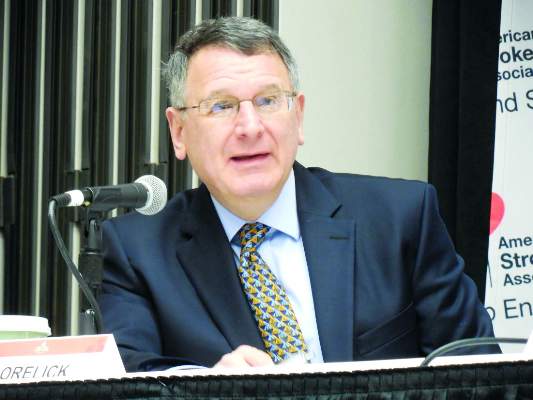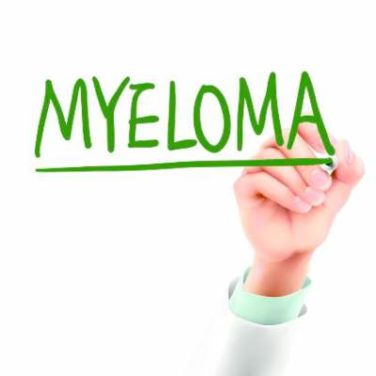AT THE INTERNATIONAL STROKE CONFERENCE
HOUSTON (FRONTLINE MEDICAL NEWS) – Stroke patients with arm weakness had a clinically significant boost in arm function after about 19 weeks on a rehabilitation program that combined vagus nerve stimulation with rehabilitation training sessions in a multicenter, randomized, and sham-controlled proof-of-concept study with 17 patients.
This promising result follows a prior 21-patient study with a similar design and results ( Stroke. 2016 Jan;47[1]:143-50 ), making the next step a pivotal trial with about 120 randomized patients that should start in 2017, Jesse Dawson, MD , said at the International Stroke Conference sponsored by the American Heart Association.
“We feel this is promising, but more work needs to be done,” said Dr. Dawson, a stroke researcher at the University of Glasgow (Scotland).
Results in the new study showed that eight poststroke patients with arm weakness who received a prolonged course of vagus nerve stimulation (VNS) and rehabilitation training had an average boost from baseline in their upper-extremity Fugl-Meyer score of 9.5 points measured 132 days after the start of the regimen, compared with an average 3.8-point rise among nine similar patients who underwent the same rehabilitation training but without VNS. A rise of 4-7 points on the upper-extremity Fugl-Meyer score is considered clinically significant for chronic stroke patients ( J Physiotherapy. 2017 Jan;63[1]:53 ). The difference in mean scores between the VNS and control groups after 132 days was statistically significant for a secondary endpoint of the study.
The study’s primary endpoint, the difference between the control and VNS patients in mean upper-extremity Fugl-Meyer scores at the end of the initial phase of the study – a 6-week supervised training period – was 7.6 points in the VNS recipients and 5.3 points for the control patients, a difference that was not statistically significant.
The 9.5-point boost in average scores with more prolonged treatment and follow-up in the VNS patients is “highly likely to be clinically significant,” Dr. Dawson said. “We would like to see an effect earlier, with clinically important effects after 6 weeks of treatment. That would make the intervention easier to translate into clinical practice.”
The study ran at three U.S. centers and in Glasgow and enrolled patients who were 4 months to 5 years out from their index stroke and had moderate to severe arm weakness based on an upper-extremity Fugl-Meyer score of 20-50. The average age of the 17 patients in the study was 60 years. They were an average of 1.5 years removed from their index stroke.
All of the patients received an implanted device to produce VNS. The eight patients in the active arm received VNS during their 2-hour, thrice-weekly rehabilitation training sessions for the first 6 weeks of the study, with about 400 individual stimulations delivered during each training session. The nine controls received brief VNS to aid blinding, but had no meaningful VNS while they replicated the rehabilitation training regimen of the intervention group. At the end of 6 weeks, no training or VNS was done for 30 days. Then for the next 60 days, all patients did a daily program of unsupervised home rehabilitation exercises and patients in the intervention arm also self-administered 30 minutes of VNS daily.
The 17 patients who received a VNS device implant had three serious adverse events, Dr. Dawson reported : one infection, one episode of dyspnea, and one episode of vocal cord paralysis. None of the adverse events were judged definitely or likely linked to the stimulator, and all three effects were in control patients. In several patients in both arms, nonserious adverse effects occurred that are expected for the surgery used, including bruising, pain, swelling, and scarring. When the study ended, patients originally randomized to the sham group underwent active intervention with VNS and subsequently had an average 13-point increase on their upper extremity Fugl-Meyer score.
MicroTransponder, the company developing the vagus nerve stimulation device, funded the study. Dr. Dawson has received travel and meeting cost reimbursements from MicroTransponder, and several coauthors are employees of the company.
On Twitter @mitchelzoler




